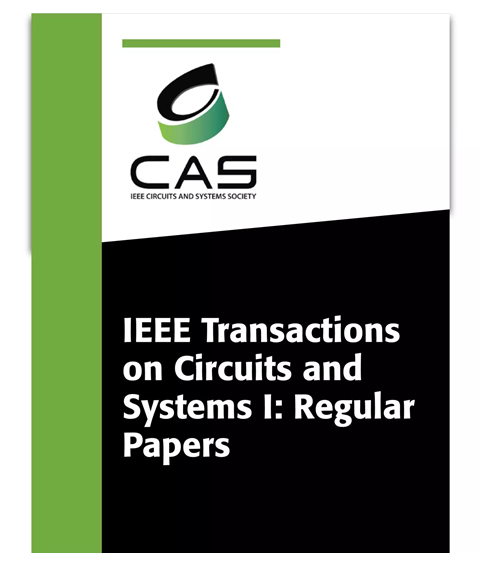使用 16 点编码本实现上行链路 MIMO-SCMA 检测的组近似期望传播算法
IF 5.2
1区 工程技术
Q1 ENGINEERING, ELECTRICAL & ELECTRONIC
IEEE Transactions on Circuits and Systems I: Regular Papers
Pub Date : 2024-08-20
DOI:10.1109/TCSI.2024.3439616
引用次数: 0
摘要
用于稀疏码多路存取(SCMA)检测的传统按摩传播算法(MPA)的复杂度随着码本大小的增加而呈指数增长,这给大容量码本的硬件实现带来了挑战。由于期望传播算法(EPA)的复杂度与码本大小呈线性关系,因此显示出其优越性。本文提出了对数域分组近似 EPA(GA-EPA),以进一步降低复杂度。将母星座点划分为若干组,可以简化后验概率的计算。与传统的 EPA 相比,对数域 GA-EPA 可为 MIMO-SCMA 信号检测减少约 76.4% 的乘法和 53.8% 的除法。我们使用定制浮点来缩短字长,并利用指数函数的特性,使总面积减少了 17%,表格减少了 99%。从综合结果来看,我们设计的 MIMO-SCMA 检测系统采用 4 个接收天线 16 点编码本,在 167MHz 工作频率下可实现 364Mbps 的吞吐量。与之前的 MPA 相关实现相比,我们的工作在归一化硬件效率方面表现出色,并为大编码本卡数提供了一种有前途的解决方案。本文章由计算机程序翻译,如有差异,请以英文原文为准。
Implementation of Group-Approximate Expectation Propagation Algorithm for Uplink MIMO-SCMA Detection Using 16-Point Codebook
The complexity of conventional massage propagation algorithm (MPA) for detection of sparse code multiple access (SCMA) grows exponentially as the size of the codebook increases, posing a challenge for hardware implementation of large-size codebooks. Expectation propagation algorithm (EPA) has shown its superiority owing to its linear complexity with respect to the codebook size. In this paper, we propose log-domain group-approximate EPA (GA-EPA) for further complexity reduction. The mother constellation points are partitioned into several groups, which can simplify the calculation of posterior probability. Compared to conventional EPA, log-domain GA-EPA can reduce approximately 76.4% of multiplications and 53.8% of divisions for MIMO-SCMA signal detection. A GA-EPA detector is then designed in 40nm CMOS technology, we use customized floating-point to shorten word-lengths and to exploit the property of exponential function for accomplishing 17% total area reduction and more than 99% table reduction. From the synthesis results, our design for MIMO-SCMA detection with 16-point codebook from 4 receiving antennas can achieve a throughput of 364Mbps at an operating frequency of 167MHz. Compared to the prior MPA-related implementations, our work outperforms in normalized hardware efficiency and demonstrates a promising solution for large codebook cardinality.
求助全文
通过发布文献求助,成功后即可免费获取论文全文。
去求助
来源期刊
CiteScore
9.80
自引率
11.80%
发文量
441
审稿时长
2 months
期刊介绍:
TCAS I publishes regular papers in the field specified by the theory, analysis, design, and practical implementations of circuits, and the application of circuit techniques to systems and to signal processing. Included is the whole spectrum from basic scientific theory to industrial applications. The field of interest covered includes: - Circuits: Analog, Digital and Mixed Signal Circuits and Systems - Nonlinear Circuits and Systems, Integrated Sensors, MEMS and Systems on Chip, Nanoscale Circuits and Systems, Optoelectronic - Circuits and Systems, Power Electronics and Systems - Software for Analog-and-Logic Circuits and Systems - Control aspects of Circuits and Systems.

 求助内容:
求助内容: 应助结果提醒方式:
应助结果提醒方式:


